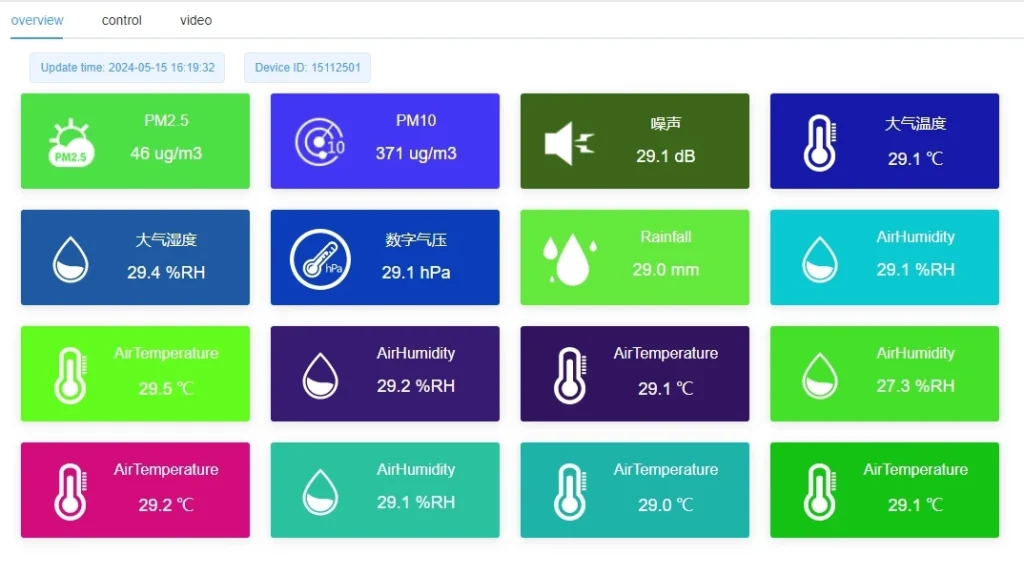What is the environmental sensor?
An environmental sensor is a device that measures and records different environmental factors. IoT sensors monitor various conditions.
They measure temperature, humidity, and pressure. They also track light, rain, wind speed, and wind direction. Additionally, they monitor noise and particles like PM2.5 and PM10.
These devices have two main parts. The first part is a sensitive element that detects changes in the environment. The second part converts these changes.
It changes these detected changes into an electrical signal. This signal is used for measurement and recording.
environmental sensor types
Iot environmental sensors show different types, like those for wind speed and direction. They also measure atmospheric conditions, such as temperature, humidity, and air pressure. The team also includes solar radiation sensors.
These examples show different types of environmental sensors. People often use these sensors in areas like protection, farming, weather, and industry. In environmental protection, they help detect air quality and pollution. This allows for quick action and solutions.
In meteorology, experts collect data for weather forecasts and climate studies. They check temperature, humidity, air pressure, and wind.
In farming, sensors check soil temperature, moisture, and light levels. They help farmers plant crops and manage water better. There are different types of sensors, each measuring specific factors. They use principles like thermoelectric effects, resistance, capacitance, and photoelectric technology.
New technology has made sensors more accurate and stable. It has also introduced new types of sensors, such as wireless, small, and smart ones. These changes expand the ways we can use real-time, remote, and smart monitoring.
Stainless steel tipping bucket rain gauges show how modern sensors can work outside. As technology gets better, these devices will likely change and be used in more fields.
Environmental sensors are used in many fields. Here are some key situations where they are often used:
Environmental Monitoring:
These sensors are important for checking air quality, temperature, humidity, and noise levels. For example, air quality sensors measure harmful gases and particles. They give vital information to environmental protection agencies.
Temperature and humidity sensors gather data for weather, farming, and industry. Noise sensors track environmental noise and its impact on human health.
Smart Home:
In smart home systems, sensors check indoor conditions such as temperature, humidity, and light. This information helps control devices like air conditioners, humidifiers, and curtains. This keeps your living space comfortable.
Industrial Control:
In factories, these sensors help manage factors like temperature, humidity, and pressure during production. This control is key for maintaining product quality and efficiency.
Energy Management:
Environmental sensors help manage energy by checking indoor and outdoor conditions. They optimize air conditioning and heating systems. This leads to energy savings and less pollution.
Transportation:
These sensors check conditions in vehicles and airports. They track temperature, humidity, and light to keep passengers and cargo safe.
Agriculture:
Farmers use sensors to check soil temperature, humidity, and pH levels. This data helps them grow crops better and improve quality.
Meteorological Monitoring:
In weather forecasting and climate research, these sensors measure key factors. They track temperature, humidity, air pressure, and wind speed. This data is crucial for making accurate predictions.
The benefits of environmental sensors in these areas include:
– Real-Time Monitoring:
They quickly notice changes in the environment. This improves how well we can monitor things.
– High Accuracy:
Modern sensor technologies give accurate and sensitive readings. They are better than manual methods for detecting small changes in the environment.
– Automation:
Environmental monitoring sensors gather and analyze data on their own. This cuts costs and makes operations easier.
– Remote Monitoring:
Using IoT and cloud computing, these sensors help monitor and send data from afar. This allows managers to access environmental data anytime and anywhere.
– Reliability:
Sensors work well and last a long time. They help us keep an eye on the environment.
– Flexibility:
Many types of sensors are available to meet different monitoring needs.
– Easy Integration:
Sensors can easily connect to various data collection systems and software. This helps improve data management.
– Low Cost:
New technology has reduced the cost of making sensors. This makes it easier to use them on a large scale.
Overall, real-time responsiveness, accuracy, automation, remote monitoring, and reliability make IoT environmental sensors very important. They are flexible, easy to use, and affordable. These sensors help protect the environment and support sustainable development in many ways.
